Chapter: Introduction to Botany: Tissues and organs; How the Plant is built
Anatomy of the Primary Stem
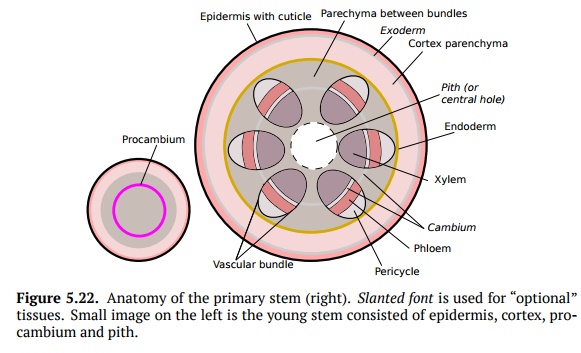
Anatomy of the Primary Stem
Plant evolution
resulted first in the primary stems
with no lateral meristems and secondary tissues. Only long after plants
“learned” how to thicken their stems.
Development of stem starts from stem apical meristem (SAM) on the top of plant. The SAM produces three primary meristems: procambium, protoderm, and ground meristem. Protoderm cells differentiate into epidermal cells. The ground meristem differentiates into the cortex and pith. The procambium raises between the cortex and the pith. It forms vascular bundles or vascularcylinder.
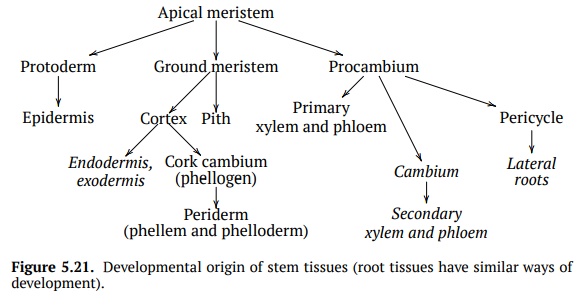
The outer layers of
the procambium form the primary phloem.
The inner layers become the primary xylem.
The middle layer can be entirely spent or will make cambium for the secondary
thickening. At times, the layers of the outside of the procambium can form a pericycle. Sometimes the innermost
layer of the cortex can form an endodermis
(endoderm) (Fig. 5.22), and outermost layer
makes the exodermis (exoderm). All
these layers are some kind of the “border control” between functionally
different layers of stem. Another frequent variant is the development of
collenchyma in the cortex adjacent to epidermis.
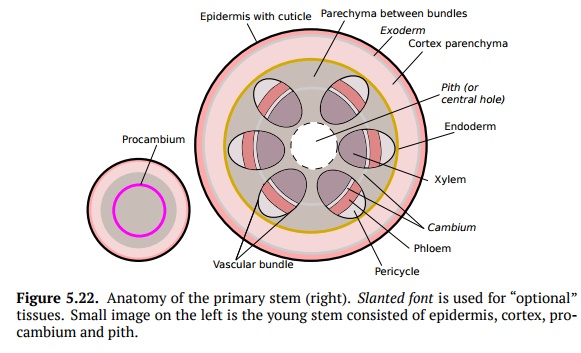
Vascular bundles
connect leaves and stems. In many plants, they form a ring on the cross-section
of the stem. Parenchyma (ground tissue) between vascular bundles typically
belongs to both cortex and pith. Another variant is a vascularcylinder, structure which fully encircles the stem. Liliid
(monocot) stems gen-erally have dispersed vascular bundles. These three
variants are steles, overall
configurations of the primary vascular system of the plant stem (Fig. 5.23). The most frequent kinds of steles are eustele (vascular bundles in a ring), solenos-tele (vascular cylinder) and ataktostele (dispersed vascular
bundles).
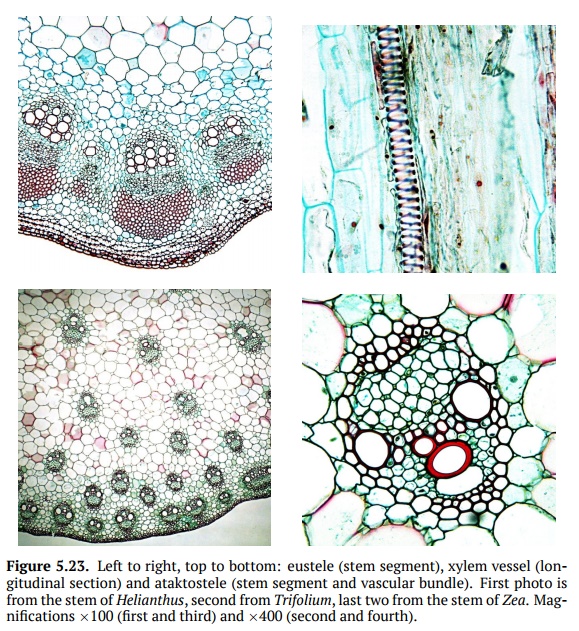
All these types were
probably originated from protostele,
configuration where central xylem is surrounded with phloem and no pith is
present (Fig. 5.24). While the protostele was
typical for many prehistoric plants, now only some lycophytes (Huperzia) have protostele in stems.
Saying that, it is important to note that roots of most plants have vascular
tissues arranged similarly to protostele.
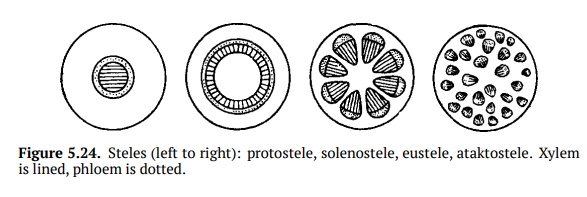
Related Topics